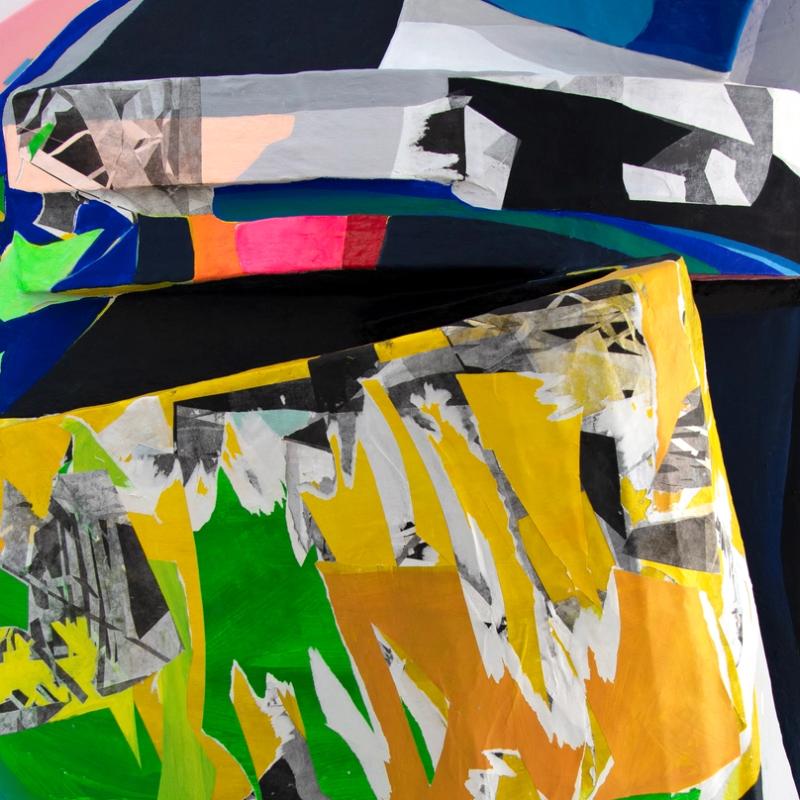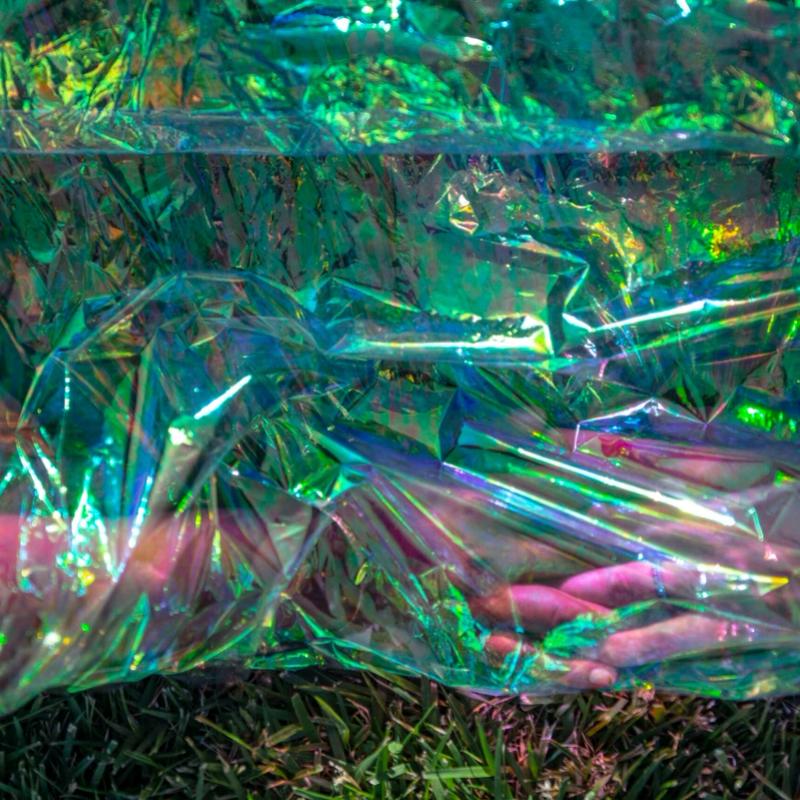A Poet Asks a Painter: A Conversation with Paul Wackers
by Sarah AudsleyPoet Sarah Audsley asks our featured artist, Paul Wackers, some questions for Shenandoah’s Fall 2023 Issue.

Yellow Studio, Acrylic and spray paint on canvas, 50in x 60in, 2017
Sarah Audsley: As a long-time admirer of your work, I was wondering if you could describe how you work with the color yellow. In many of your paintings, it appears to be the base for the negative space, or the contrast that makes objects or other colors pop. Can you share when you started using yellow in this way? And why yellow? (I love yellow and it appears throughout my first book of poems.)
Paul Wackers: I wish I had a really deep answer for this, but I think it is very flexible and also a hard-to-pin-down color. It is normally very transparent so when you add other colors to it it can swing in many wide directions, but also sometimes it’s very unexpected and hard to control if taken too far.
SA: In a Hyperallergic interview you say, “Once you put a person into a painting—that becomes the subject. With a figure, you are really directing the drama. I don’t want to do that. I like to set the stage.” Would you describe setting the stage of your painting, Yellow Studio, 2017, acrylic and spray paint on canvas, 50” x 60”, which is the cover art for this issue? (Is it weird to reflect back on a piece from six years ago? The world was different then…I know when I go back and re-read some poems I’ve published, I see what I would change now, or how that poem was a stepping stone to something else, or it makes me think about what was happening in my life at that time…)
PW: Well, generally, I think this painting was hinting at a time of day and year like a warm summer afternoon with a setting sun. The objects and the grating are touching on what type of space it is. A little mysterious and a place to investigate. With the grate, you have a bit of a space where you are safe inside, or a space you might want to get out of, all at the same time.
SA: I am drawn to the shapes and forms of flowers, floral arrangements, and objects of potted plants and ceramic pieces in your paintings. I know many of the ceramic pieces are objects you’ve made, or ideas for future ones. Could you say anything about the repetition of form or the gesture to return, again and again, to the same form, but different takes? (A poetry analogy: sometimes it helps me to return to the same poetic form, the sonnet, for example. Using the same form, but filling it with different iterations helps me continue to generate and try new ideas. What can happen in fourteen lines seems endless.)
PW: Yes, I agree, about reusing ideas to allow them to explore new paths. That didn’t get noticed the first time around. I also like that the objects become familiar characters to me, but also to the people that follow the work over time.

Surface tension, Acrylic, spray paint on canvas, 48in x 40in, 2023
SA: As a poet, my medium is words and sentences, but I’m often envious of my friends who are painters and sculptors. What would you do if you weren’t a painter? Would you ever switch to a different discipline or art form? Or something other entirely?
PW: I really like to cook, so I think maybe a recipe tester or an assistant to a cookbook author, since I find cooking a satisfyingly parallel activity to painting.
SA: Over the years, I’ve followed your auctions and raffles on Instagram to support various causes. Back in 2020, I participated in one of your IG auctions myself. How have you been able to balance your creative practice with the business side of things?
PW: The auctions or sales online kind of work against the business side of art. I do it to give money to causes that I want to support, but can’t on my own. It is also a nice way to allow people who can’t afford my work, at market price, to have a chance at it. It helps me feel better about humanity, I think.

If You dip I dip we dip, Acrylic, spray paint on canvas, 60in x 56in, 2023
SA: Back in 2021, you installed six floors of murals of seventeen canvases, which took six months to create and multiple months of logistical planning. That seems like such an incredibly ambitious and large-scale project. What is it like to work at that larger scale?
PW: That was a really fun project to figure out. It was like a big puzzle, plugging in the pieces and not knowing exactly how it would look on site, at scale, as it was transferred to the wall by billboard painters three times larger than the canvases in the studio.
SA: What are you excited about working on next?
PW: I am looking forward to having a little more time between upcoming shows. This last year was wild—a year or so of a show every three to four months.

The window goes both ways, Acrylic, spray paint on canvas, 60in x 60in, 2023


